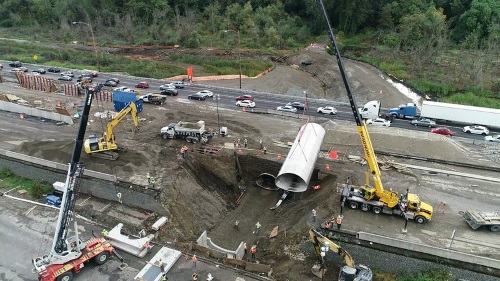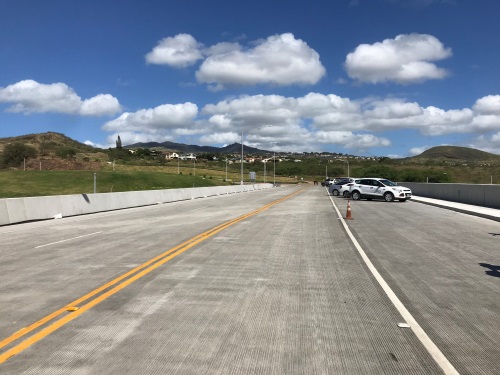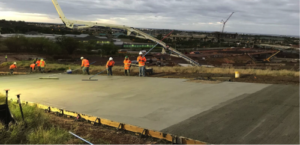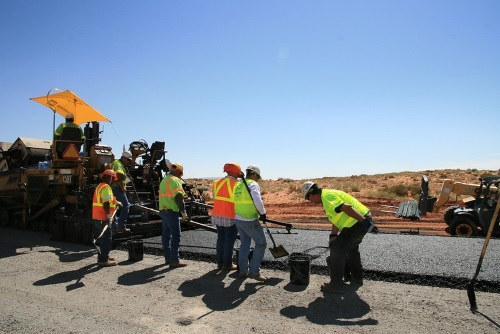Climate change and the swirling air of unpredictability around its effects are creating new challenges for transportation officials: dealing with damage from extreme storms that can plague the Midwest, the rise of coastal sea levels, and increased wildfire activity in the southwest.
A detailed understanding of climate threats has become essential when constructing a safe, sustainable transportation system. To that end, the Washington State Department of Transportation completed several studies on the subject, including the Climate Impacts Vulnerability Assessment Reportand theClimate Change and Innovative Stormwater Control,which help the department analyze risks and address potential hazards.
Carol Lee Roalkvam, WSDOT’s environmental policy branch manager, noted that her department initially addressed the matter of climate change in 2011 by “conducting a statewide vulnerability assessment for all of our assets, with help from the FHWA [the Federal Highway Administration]. We have relied on that assessment since concerning climate-related threats or vulnerability.”
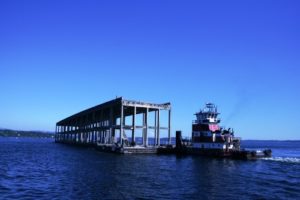
She highlighted one large project that included extreme weather considerations: State Route 520, a 13-mile highway that connects Seattle to Redmond and includes the new Evergreen Point Floating Bridge; the longest floating bridge in the world. That bridge, which opened in April 2016, is built to withstand sustained winds of up to 89 mph. “We used the best available science to brace for changes projected for the future,” Roalkvam said of the construction.
Another example is WSDOT’s Fish Passage Barrier Correction Program. To date, the department has completed 345 fish passage barrier corrections, allowing access to approximately 1,155 miles of potential upstream habitat for fish. Eventually, it will guide the replacement of hundreds of small culverts to provide more access to fish attempting to reach habitat. The new fish-friendly culverts are designed to realign and restore stream channels for fish migration while simultaneously providing more resilient water crossings.
Another concern at WSDOT is the issue of sea level rise and its impact on ferry terminals and coastal highways. At the Mukilteo Multimodal Terminal Project, in the town of Mukilteo, the department projected sea level rise out to the year 2100, with the project team also examining the impact of upland stormwater runoff. Examining saltwater and freshwater flooding risks during the lifespan of the terminal were part of the planning.
There are similar concerns in Utah, where the Utah Department of Transportation just released information concerning a variety of projects that are being built with addressing climate change in mind. The two largest are the U.S. 89 Farmington to I-84 – a $489 million projectthat encompasses converting a 9.5-mile section of U.S. 89 to a freeway by widening the road to three lanes in each direction – and the Bangerter Highway Three Interchanges; a $222 million project that calls for the replacement of existing intersections with freeway-style interchanges along the highway at three new locations.
“We always take into account extreme weather conditions when designing and building our road construction projects,” explained John Gleason, a Utah DOT spokesperson. “In Utah, we see it all: blizzards, ice, flooding, mudslides, and scorching summer heat. We have to use durable and sustainable materials and design our projects to stand up to the elements.”
WSDOT’s Roalkvam thinks planning for such events has been taken to a new level, as she “definitely” sees “an increased understanding among her agency’s technical employees and planners of how their work can influence long-term transportation system resilience, especially related to climate change.”

